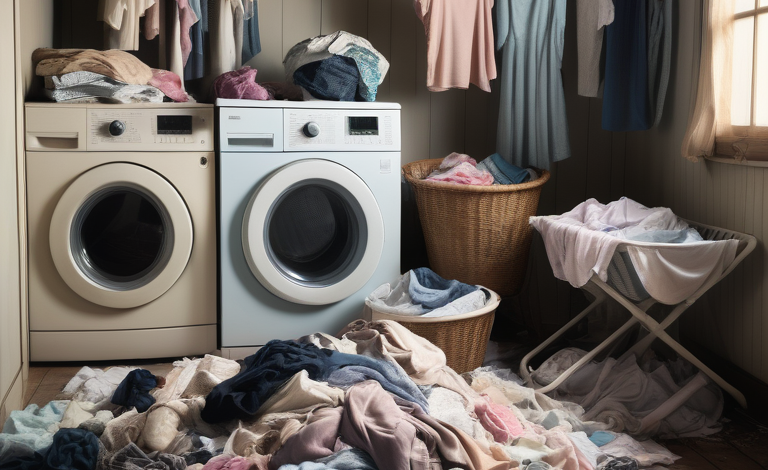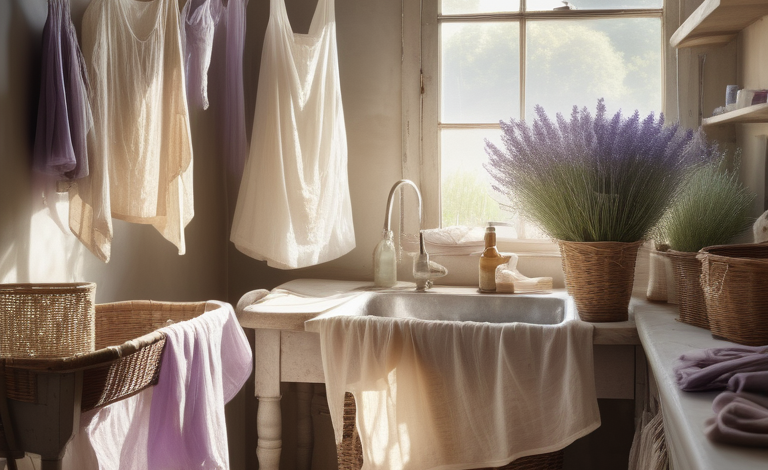Should You Wash Socks Separately From Clothes: Expert Advice


Key Highlights
- Want your socks to last longer and stay bright? Consider washing them separately!
- Different fabrics have different washing needs, so pay attention to material and color.
- Washing socks separately can improve hygiene and prevent lint transfer.
- Always use a gentle cycle and cold water to wash socks, regardless of the fabric.
- Proper drying techniques, like air-drying, can also extend the lifespan of your socks.
- Learn how to sort and wash socks correctly for optimal cleanliness and longevity.
Introduction
Doing laundry often feels like a never-ending chore, and you might be tempted to toss everything into the washing machine at once. However, when it comes to socks, separating them from your clothes might be the best option for maintaining their quality and hygiene. But is it really necessary? Let’s explore the factors to consider when deciding whether to wash socks separately or with the rest of your laundry.
Understanding the Basics of Sock Care
Socks, often hidden beneath our shoes, endure a lot throughout the day. They absorb sweat, trap dirt, and face constant friction, making proper care essential for their longevity and hygiene.
The first step to proper sock care is understanding the fabric composition. Different materials have different washing requirements. For instance, delicate fabrics, such as silk or lace, demand gentler handling compared to sturdy cotton socks. Additionally, colorfastness plays a crucial role. Brightly colored socks, especially new ones, can bleed dye during washing, potentially staining lighter-colored garments.
Therefore, understanding the basics of sock care involves recognizing the fabric type and colorfastness to make informed laundry decisions.
The Material Matters: How Different Fabrics Affect Washing
Washing socks goes beyond just tossing them in the machine; the type of fabric matters significantly. Delicates like silk or wool socks demand a gentle cycle and cold water to prevent shrinking or damage.
On the other hand, cotton socks, known for their durability, can handle warmer water temperatures. However, even with cotton, a gentle cycle is still recommended to preserve the elastic and shape of your socks.
Considering these factors ensures that your socks receive the appropriate care based on their material composition, preserving their quality and extending their lifespan.
Colorfastness and Bleeding: Separating Brights and Darks
One of the primary reasons for separating laundry is to prevent color bleeding. This risk is particularly high with socks, as they tend to be brightly colored.
Washing bright or new socks with lighter-colored clothes can lead to dye transfer, leaving your whites and lights tinged with unwanted hues. To avoid this mishap, it’s best to separate your socks by color, washing brights and darks in separate loads.
For added protection, especially with new socks or delicate fabrics, consider using laundry bags. These mesh bags provide a physical barrier, preventing direct contact between garments and minimizing the risk of color bleeding.
The Debate: Washing Socks with Clothes
- While some people advocate for washing socks separately, others find it perfectly acceptable to include them with the rest of their laundry. The decision often boils down to personal preference and laundry habits.
- Factors like the type of clothes you’re washing, the water temperature, and your tolerance for potential issues like lint transfer or minor color bleeding all come into play.
- Ultimately, understanding the pros and cons of each approach can help you make an informed choice that aligns with your laundry routine and preferences.
Pros of Washing Socks Separately
Washing socks separately offers several benefits, primarily centered around hygiene and garment care. Here are some compelling reasons to consider giving your socks a dedicated wash:
- Enhanced Cleanliness: Washing socks separately ensures they receive a thorough cleaning, free from potential contamination from other garments, particularly those worn on the body.
- Increased Lifespan: Separate washing protects socks from the mechanical stress of being mixed with heavier clothes, preserving their delicate fibers and elastic, which contributes to a longer lifespan.
- Reduced Lint Transfer: Socks, especially those made from cotton, tend to attract lint. Washing them separately prevents lint from clinging to other clothes, keeping your garments looking their best.
Cons of Mixing Socks with Regular Laundry
While washing socks with clothes might seem convenient, this practice has its drawbacks:
- Lint Accumulation: Socks are notorious for attracting lint, which can transfer onto other clothes during washing, especially on materials like towels or fleece.
- Color Fading: Washing socks with clothes increases the risk of color bleeding, particularly from new or brightly colored socks, potentially fading or staining other garments.
- Compromised Cleaning: Mixing heavily soiled items like gym clothes with socks might not allow for effective cleaning of all garments, particularly if using a quick wash cycle.
Best Practices for Washing Socks
Regardless of whether you choose to wash socks separately or with your clothes, following some best practices can ensure they stay clean, retain their shape, and last longer.
These practices involve simple steps like sorting socks by color and fabric type, selecting the appropriate washing machine settings, and utilizing proper drying techniques. Implementing these tips can make a noticeable difference in the longevity and freshness of your socks.
Sorting Socks by Type and Color
The best way to ensure your socks receive the best care possible is to sort them properly before washing. Begin by separating socks based on color, grouping whites, lights, and darks as you would with other laundry. This step minimizes the risk of dye transfer and keeps your colors vibrant.
Next, consider the sock’s material. Delicate materials, like silk or wool, should be washed separately from sturdy cotton socks. You can further categorize them by their intended use, separating athletic socks from dress socks to ensure a thorough cleaning based on their level of soiling.
Recommended Wash Settings for Socks
Washing socks correctly involves choosing the right settings on your washing machine to prevent damage and ensure thorough cleaning. Start by selecting a gentle cycle, as this minimizes wear and tear on the delicate fibers and elastic bands of your socks.
Cold water is generally the best option for washing socks, as it helps prevent shrinking, fading, and damage to elastic. While hot water might be tempting for heavily soiled socks, it’s best to pre-treat stains instead of exposing the entire load to high temperatures.
|
Setting |
Recommendation |
|
Cycle |
Gentle |
|
Water Temperature |
Cold |
|
Detergent |
Mild detergent, preferably liquid |
|
Drying |
Air dry or low heat tumble dry |
Conclusion
In conclusion, understanding the best practices for washing socks is crucial to maintaining their quality and hygiene. While there are pros and cons to washing socks separately from regular laundry, sorting them by type and color and using recommended wash settings can help prolong their lifespan. Whether you choose to wash socks separately or with clothes, following proper care instructions will ensure clean and fresh socks every time. Remember, taking care of your socks not only enhances their durability but also contributes to overall cleanliness and hygiene in your wardrobe.
Frequently Asked Questions
Is it better to wash socks in hot or cold water?
Cold water is the best option for washing socks. It effectively cleans them while preventing shrinking, color fading, and damage to the elastic. While hot water might seem more effective for cleaning, it can shorten the lifespan of your socks.
Can I wash white socks with colored clothes?
Washing white socks with colored clothes, especially new or brightly colored ones, is not recommended. There’s a high risk of dye bleeding from the colored clothes onto your white socks, turning them into an undesirable shade. For optimal results, always separate whites from colors and consider using laundry bags for added protection.
Should you put your socks together with the laundry into the washing machine?
It’s generally advisable to separate socks, especially colored ones, from the rest of your clothes during washing. This minimizes the risk of lint transfer, color bleeding, and ensures a more thorough cleaning for both your socks and other garments.
What are the potential consequences of washing socks with other clothing items?
Washing socks with other clothes can lead to several unwanted consequences, including lint accumulation on your clothes, fading of colors, and a shorter lifespan for your socks due to the increased friction and potential for snags from zippers or hooks.
How can washing socks separately impact cleanliness and hygiene?
Washing socks separately, much like you would with underwear, significantly enhances cleanliness and hygiene. It prevents cross-contamination from garments worn on the body, ensuring a more thorough cleaning and reducing the spread of bacteria.
Where do socks go when they get lost in the laundry?
The mystery of disappearing socks in the laundry remains unsolved! However, some theories suggest they get trapped in the washing machine’s drum, caught on other garments with loose threads, or even cling to the top band of larger items like pants, going unnoticed until laundry day.









